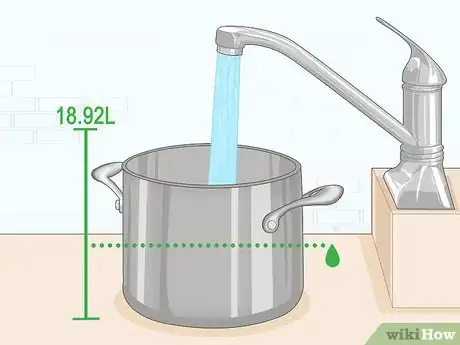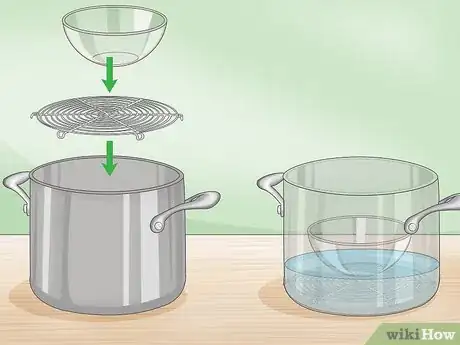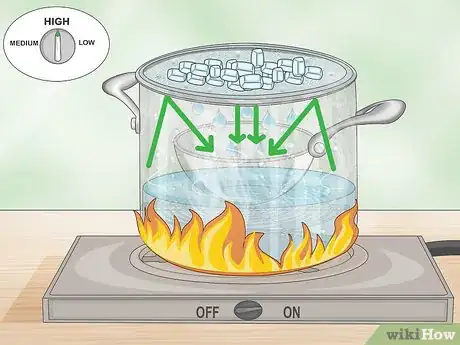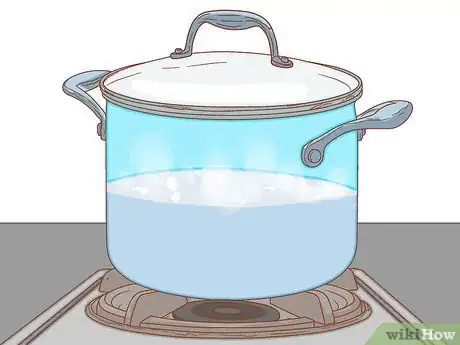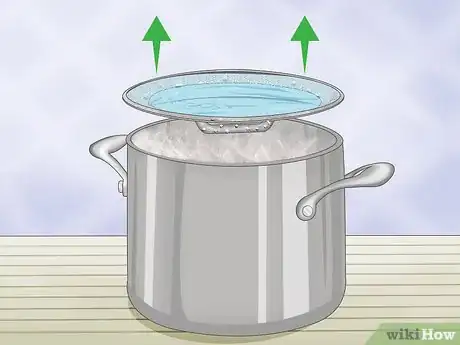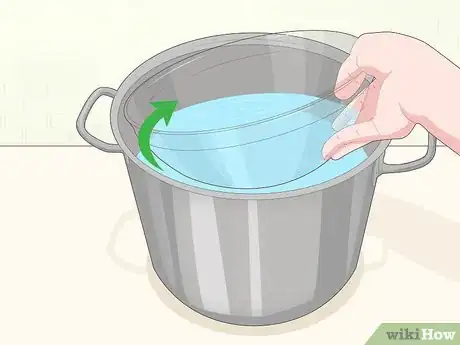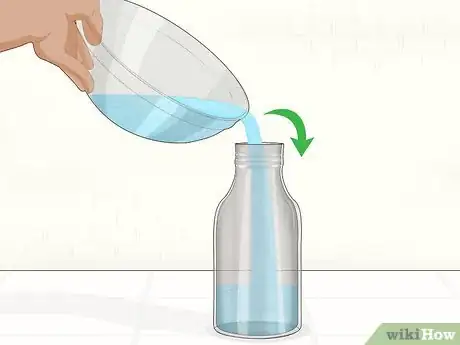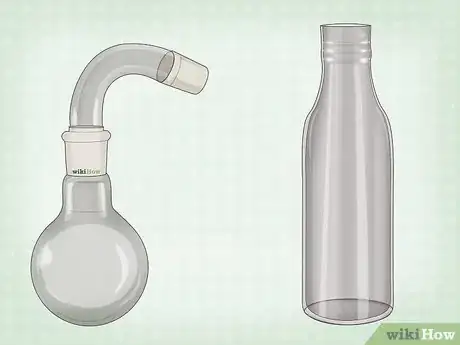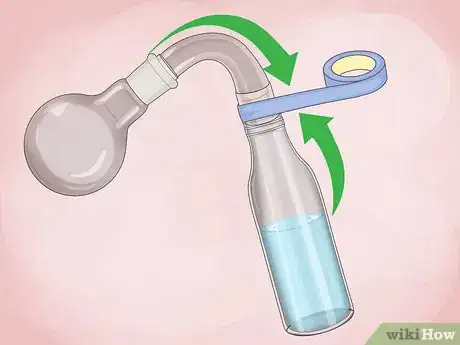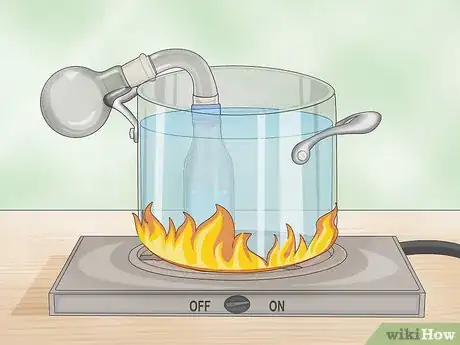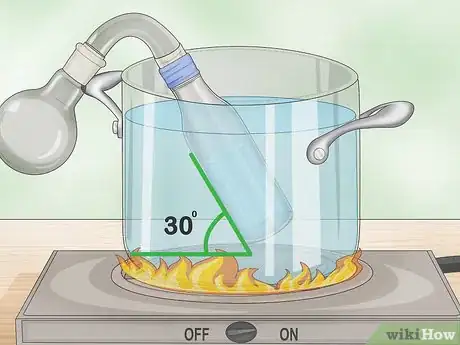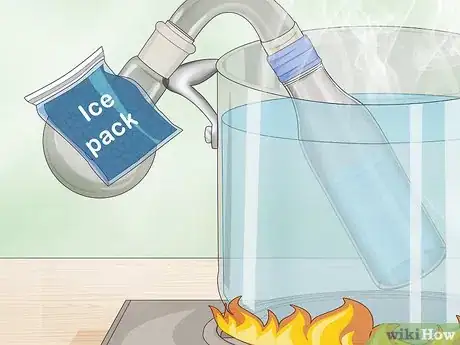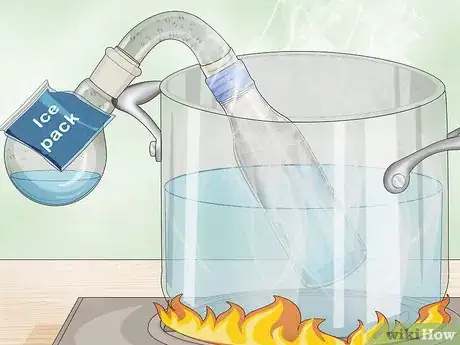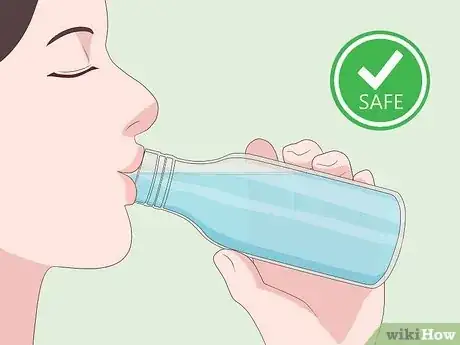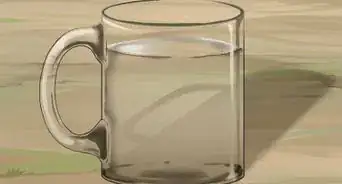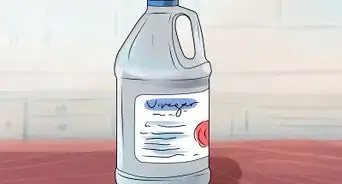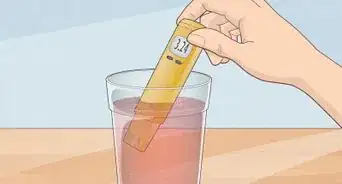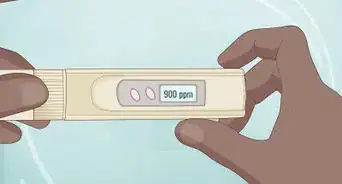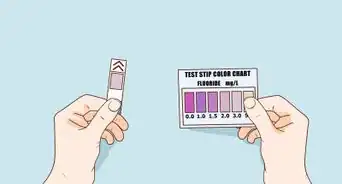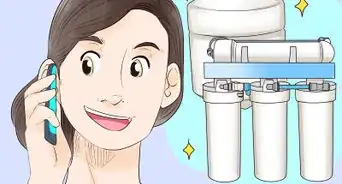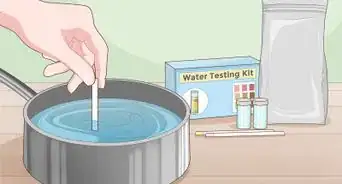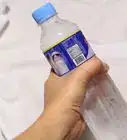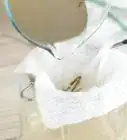This article was co-authored by Water.org. Water.org is an international nonprofit organization that has positively transformed millions of lives around the world through access to safe water and sanitation. Founded by Gary White and Matt Damon, Water.org pioneers market-driven solutions to the global water crisis — breaking down barriers to give women hope, children health and families a bright future.
wikiHow marks an article as reader-approved once it receives enough positive feedback. This article received 47 testimonials and 100% of readers who voted found it helpful, earning it our reader-approved status.
This article has been viewed 4,548,742 times.
Distilled water is a purified form of water without minerals, and you can use it for so many things—from drinking, to watering plants, to filling humidifiers, to topping off fish tanks, and more. It’s also very easy to make at home with a few basic supplies. You actually have a few different methods to choose from depending on how much distilled water you’re trying to make. This wikiHow will walk you through all of them, step-by-step, so you can start making your very own distilled water right at home!
Things You Should Know
- You’ll make distilled water by boiling water until it becomes vapor.
- Then, you’ll let the vapor condense back into liquid form, leaving you with pure water, free of minerals or contaminants.
- Distilled water is perfectly safe to drink, but because of the lack of minerals, it might taste flat in comparison to regular tap water.
Steps
Distilling Tap Water on the Stove
-
1Fill a 5-gallon (18.927 L) stainless steel pot about halfway full with tap water.
-
2Place a glass bowl in the water, and bring the water to a boil. Be sure the glass bowl floats. The bowl should not touch the bottom of the pot.
- If the bowl doesn't float, remove it from the water and set a round baking rack on the bottom of the pot. Then place the bowl back in the water.
Advertisement -
3Turn the pot’s lid upside down and fill it with ice. When hot steam from the boiling water hits the cold lid, it’ll create the condensation you need for the distillation process.
-
4Keep boiling the water in your pot. As the water continues to boil, it will cause steam to rise and condense on the pot's lid. The condensation will drip into the bowl. Allow the distillation process to continue until you have enough distilled water in the bowl for your needs.
-
5Make sure the water collecting in the bowl doesn’t boil. If the bowl water begins to boil, turn down the heat on the stove so that only the pot water is boiling.
-
6Remove your pot from the heat and take off the lid.
-
7Take the bowl of distilled water out of the pot of boiling water. Use caution when doing this so you do not burn yourself. You can allow the water to cool before removing the bowl, if you prefer.
-
8Allow the distilled water to cool before storing it.
Distilling Tap Water with Glass Bottles
-
1Get 2 glass bottles for making distilled water. This process works best if at least 1 of the bottles curves outward from the neck, preventing the distilled water from sliding back into the other bottle.
-
2Fill 1 bottle with tap water. Stop filling about 5 in (12.7 cm) from the top.
-
3Join the 2 bottles together at the neck and secure them tightly with duct tape.
-
4Use a 5-gallon (18.927 L) stainless steel pot of boiling water to distill the water. You want just enough water to cover the bottle filled with tap water.
-
5Tilt the bottles at about a 30-degree angle, leaning the top, empty bottle on the inside of the pot's rim. The angle makes it easier to collect the evaporated distilled water.
-
6Rest an ice pack or a bag of ice on top of the bottle on top. This will create a hot/cold barrier, causing the evaporation of water in the filled bottle to condense into the cooler bottle.
-
7Continue the distillation process until you collect enough distilled water in the bottle for your needs.
Warnings
- Make sure that certain glass bowls and bottles can withstand boiling water.⧼thumbs_response⧽
- Only the water in the bowl or bottle will have distilled water. The remaining water will contain all the impurities you removed from the distilled water.⧼thumbs_response⧽
- You will need to add the appropriate chemicals to distilled water to support aquatic life before using it in your fish tank or aquarium. Without these chemicals, the distilled water will not be able to support life.⧼thumbs_response⧽
Things You'll Need
- 5-gallon (18.927 L) stainless steel pot
- Tap water
- Glass bowl
- Round baking rack
- Pot lid
- Ice
- 2 glass bottles
- Duct tape
- Ice pack or a bag of ice
- Large container
- Rainwater
- Jugs
About This Article
To make distilled water, first place a round baking rack in the bottom of a 5-gallon (19-L) stainless steel pot and fill the pot halfway with tap water. Then, place a glass bowl in the water so it floats. Turn the cover to the pot upside down, place it over the pot, and fill it with ice. Bring the water in the pot to a boil and let it boil for around 45 minutes. Replace the ice whenever it melts. The boiling water will turn to steam, rise up, and condense on the cold lid. When it condenses, it will drip back down into the bowl and fill it with distilled water. Once you have enough distilled water, turn off the heat and take off the lid. Use gloves to carefully remove the bowl full of water. Finally, let the distilled water cool before using it. To learn how to make distilled water from rainwater, scroll down!
